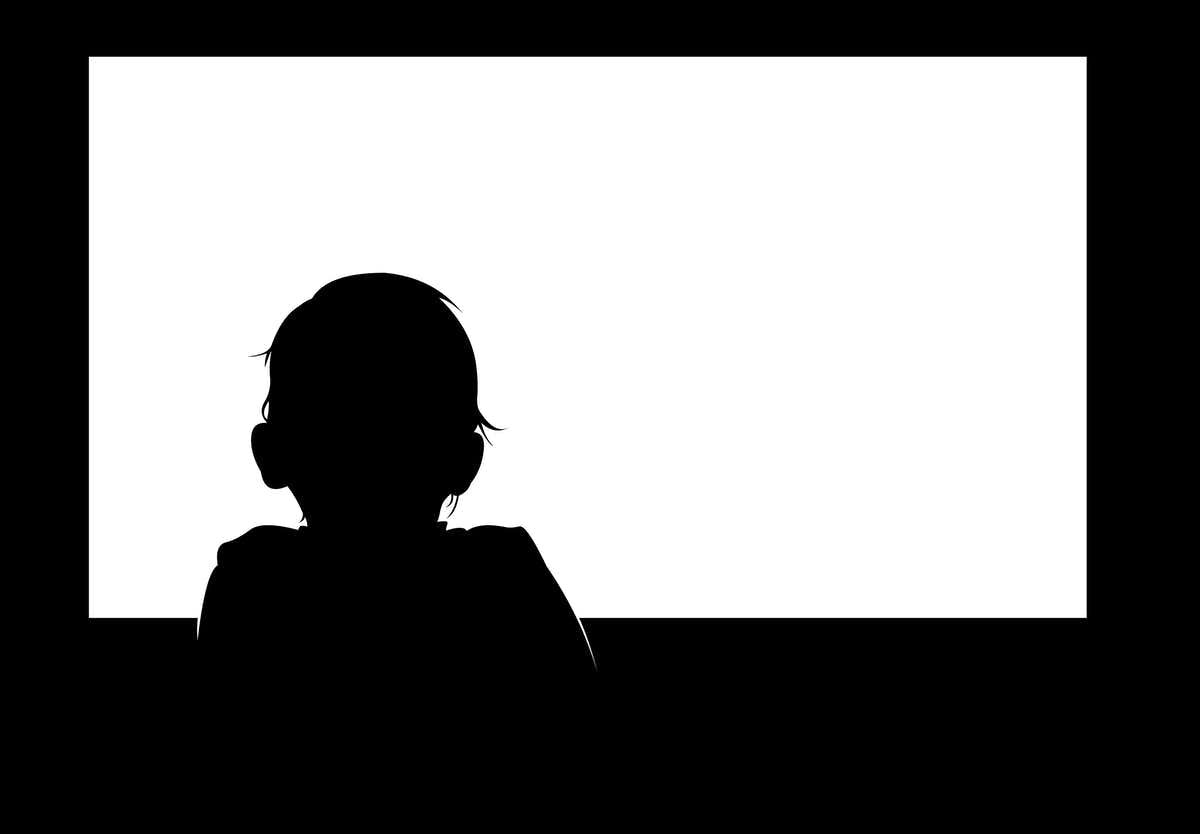When I was little, I wanted to be Cinderella. I watched the Disney film on repeat, dressed up in her blue ball gown for multiple Halloweens and begged my parents to take me to Disney World so that I could meet the princess who had the same blonde hair and blue eyes as I did.
Millions of other little girls do not have their Cinderella. They were never exposed to a princess who looked like them nor any animated character that shared their same racial and ethnic identity. According to the Children’s Television Project (CTV), “content analysis work has consistently found not only vast underrepresentation of characters of color and female characters, but also significant differences in the roles they play and in their portrayal.”
In 2018, the CTV Project emphasized that children are consuming television programming more than ever before. Today, this consumption skyrockets. A survey released by the ParentsTogether Foundation found that the average daily screen time has doubled for kids during the coronavirus pandemic.
Why It’s Newsworthy: Due to this increased exposure and recent conversations over the film and entertainment industry’s role in systemic oppression, diversifying children’s on-screen stories is an essential step on the path to progressive change.
Lauren Pavell, a full-time financial analyst and mother of two grade school children, explained how she tries to be proactive in talking about diversity within the shows that her kids are watching, especially following the Black Lives Matter movement and COVID-19.
“As much screen time as our children are having during this pandemic, it’s important to be aware of what that media is enforcing into their tiny, little developing brains,” Pavell said.
The Black Lives Matter movement heightened awareness surrounding diversity gaps and misrepresentation in the media, and Pavell said many parents do not think it is necessary to talk to their children about this because they’re too young to understand. Yet, she expressed that her 8-year-old son, Hudson, listens, picks up on things and is asking questions.
“I want him to hear from me,” Pavell said. “I want my kids to know what their parents think about this.”
Janet Frick, associate professor in the Behavioral and Brain Sciences Program at the University of Georgia, researches the development of visual attention in infants and young children. In a phone interview, Frick emphasized that even before they are exposed to shows and movies, kids notice when they are represented and when they are not.
“We know that children’s perceptions of themselves and others begin in infancy,” Frick said. “From a very early age, babies show preferences for looking at faces of the same racial makeup of their caregivers, especially if they’re raised in a racially homogenous environment.”
These early preferences become built-in biases, and as children age, they gravitate toward people who are similar to what they have been exposed to. Now more than ever, children’s media has the ability to break these systemic barriers and influence positive perceptions of marginalized groups.
Walt Disney & the Fallbacks of Animated Storytelling
Since its birth, Disney prospered as a key player in children’s storytelling. Walt Disney Animation Studios, one of the oldest-running and most influential animation studios in the world, has released 58 animated feature films, beginning with “Snow White and the Seven Dwarfs” in 1937. Of those 58, only 11 features showcase a racially diverse main character, and many Disney productions continue to face criticism for their negative depictions of marginalized groups.
An article published by the Associated Press examines Disney’s portrayal of ethnic minorities, pointing out the stereotypical depictions of African-Americans in “Dumbo,” the misconceptions of Chinese culture in “Mulan” and the exaggerated facial features of the Arab characters in “Aladdin.” Another Insider article draws attention to how the main characters of color in “The Princess and the Frog,” “The Emperor’s New Groove” and “Brother Bear” spend almost all of their respective stories physically transformed into animals.
According to a 2017 study published by The Center for Scholars & Storytellers, animated fiction classifies the majority of children’s television and movies, and the study’s results indicate that this media exhibits vast racial disparities and gender gaps.
The report emphasized that some shows try to “check two boxes” by casting more racially ambiguous female characters than male characters. As content creators continuously group together the individual characteristics of both females and people of color, they generate an unbalanced portrayal of diverse characters.
The Voices Behind the Scenes
Women, and especially women of color, rarely hold executive positions in animation film and television. In the CSS report, women directed 6% of the episodes within the children’s TV programs and only 15% of the shows were created by women. Another study, conducted by the USC Annenberg Inclusion Initiative, investigated both the top 120 animated films from 2007-2018 and the first episodes of the top 100 animated TV shows of 2018.
The study’s results reveal severe employment disparities across these platforms. The storytellers and content creators behind children’s media lack diverse voices, and their on-screen stories reflect this imbalance, narrowing the narratives that children need to understand themselves and those who belong to marginalized groups.
According to Frick, entertainment media has always been able to capture human attention, and “today they’ve become very precise about which features specifically capture that attention.” This precision is evident in children’s media, sending messages to kids about their own identities and reinforcing ideas about those who differ from them.
A 2017 Common Sense Media report outlined gender bias in children’s movies and TV shows. The report emphasized that content creators need to be mindful of the messages they project, as “these media messages shape our children’s sense of self, of their and others’ value, of how relationships should work and of career aspirations.”
“Diverse representation in media is really important for kids,” Frick said. “It provides them with models of other children who don’t look like them, cultures unlike their own and when children see people who do look like them on-screen, they feel validated.”
When contemplating the future of diversifying children’s on-screen stories, Frick pointed out that for inclusive efforts to work, children’s media production companies and the entertainment industry altogether must reevaluate their previous values regarding money and mainstream practices.
“It will progress only if the media’s overall intentions and priorities change,” Frick said.
Inclusive values must be infused into the entire corporate culture, and you need the CEOs, the directors, the content creators all committed to those values,” Frick said.
From the writers and directors to every person involved in the storytelling process, the voices behind the scenes of children’s screens influence the types of stories being told. As Frick presumed, if the industry commits to better diversifying these voices, their on-screen stories will provide children with the colorful characters and narratives they need to broaden their horizons and break systemic barriers.
A Parent’s Role in Pointing Out Gaps
While content creators remain responsible for promoting diversity and inclusion on the screen, parents can play an active role in monitoring their children’s shows and engaging with them in conversations over what stories are being told, which groups are misrepresented and how to recognize these gaps.
As Pavell stated, many parents are not even aware of the media’s impact on their child’s development and perceptions. Fortunately, helpful resources exist to guide parents down this progressive path with their children. Common Sense Media, a source of entertainment and technology recommendations for families and schools, calls attention to the influence of media on kids’ lives and provides parents with ratings and reviews, research and informative tips and training.
Similarly, the CSS Resources Page compiles informative articles, videos and research findings. One of their figures walks through the stages of when children learn about race, illustrating at 3-6 months, infants notice and respond to skin color; at 2-3 years, toddlers use race to choose playmates; and at 5-6 years, children can hold the same racial attitudes as adults and associate race with status.
When parents neglect to acknowledge the lack of diversity on their kids’ screens and refuse to have these conversations with their children, the systemic barriers only grow taller, blocking younger generations’ path to progressive change.
It’s not enough for your kids to just think you’re not racist,” Pavell said. “You have to be proactive in acknowledging your whiteness and the systems that enforce that whiteness is somehow the norm.”
As the digital age progresses, resources like Common Sense Media foster guidance and discourse regarding misrepresentation in children’s media gains prevalence. Pavell and Frick both mentioned that diversity in children’s media has come a long way since they were kids. Frick even laughed and said when she was young, “a non-white Disney princess seemed out of the question.”
Jasmine, Pocahontas, Mulan, Tiana and Moana reflect small steps toward progressive change over the years. Yet, there is still a long way to go.
In the introduction of the Common Sense Media report, the authors write, “We at Common Sense view this moment in time as an opportunity to break the cycle beginning with this generation of children.”
Considering the conversations sparked by the BLM Movement and the pandemic’s effect on increased screen time, this moment in time is an opportunity for Disney and other children’s media companies to recognize the missing narratives, the misrepresented characters and the systemic cycles of their storytelling. This moment in time is an opportunity for every child to see themselves represented on their screens, for every child to have their Cinderella.
Jacqueline Reynolds is a senior majoring in journalism in the Grady College of Journalism and Mass Communication at the University of Georgia with a certificate in Interdisciplinary Writing.











Show Comments (2)